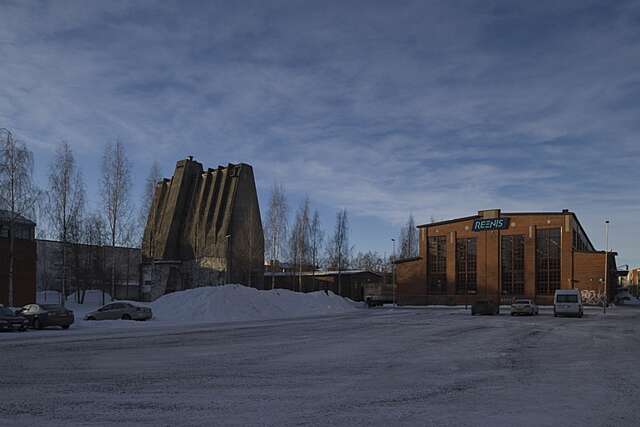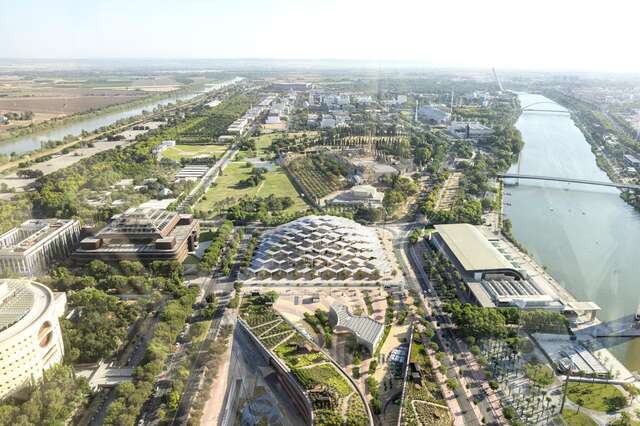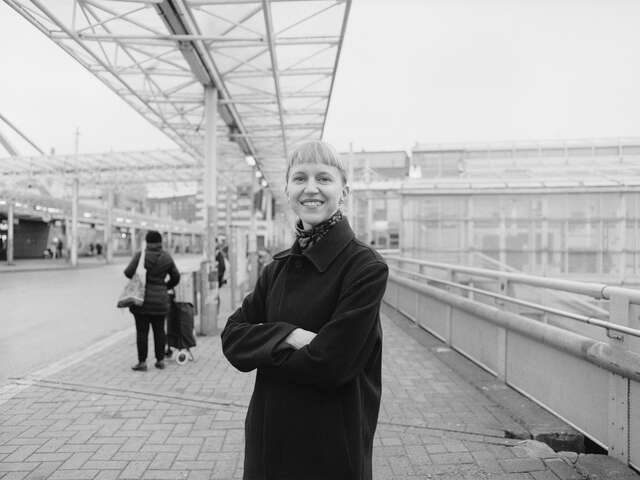New European Bauhaus Festival brings together European decision-makers and experts of the built environment
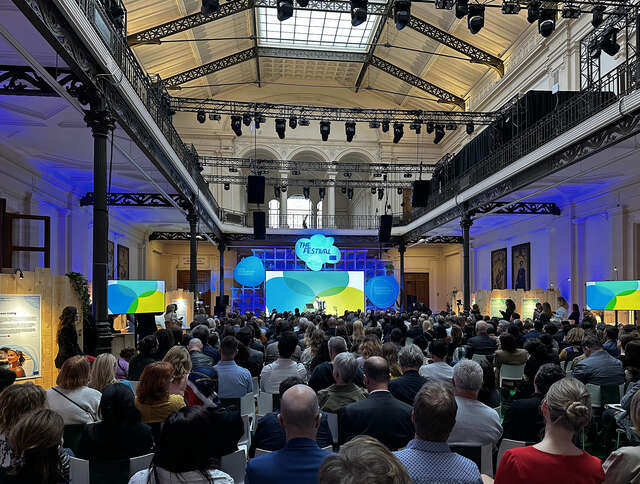
The NEB festival currently running in Brussels presents the progress of the New European Bauhaus initiative and its actions. EU Commission President Ursula von der Leyen is confident that the initiative she launched three years ago will also be running strong in the future. Finnish projects are prominently featured in the festival's programme.
The second New European Bauhaus Festival opened yesterday evening in Brussels with an uplifting opening ceremony. In her opening speech, European Commission President Ursula von der Leyen praised how the NEB, a small project started three years ago, has grown into a vast movement involving 750 non-profit organisations and hundreds of businesses and public authoroties, reaching millions of people.
"In 2021, we planted a seed that has now grown into a forest. We envisioned a more sustainable, beautiful, and inclusive future created together. We in the EU can provide the tools to make it happen, but at the heart of it all is you, the people living in Europe's towns and cities. The NEB is for you, and you will lead it," said Ursula von der Leyen in a rousing speech.
“Three years ago, we planted a seed. Today, it has grown into a forest,” said President von der Leyen.
“We wanted to showcase what a better future could look like. A future that appeals to our eyes, our minds, and our souls where the environmental and social imperatives of today meet visions of tomorrow, where people from different countries and backgrounds come together to imagine and create a sustainable, inclusive, and indeed more beautiful future.”
The President continued: “From here in Brussels, we know we can never match the creativity, diversity, and ingenuity of the Bauhaus community, but we can give you tools and resources to spread the spirit. You, the people are the strength of the New European Bauhaus. From here in Brussels, we know we can never match the creativity, diversity, and ingenuity of the Bauhaus community, but we can give you tools and resources to spread the spirit.”
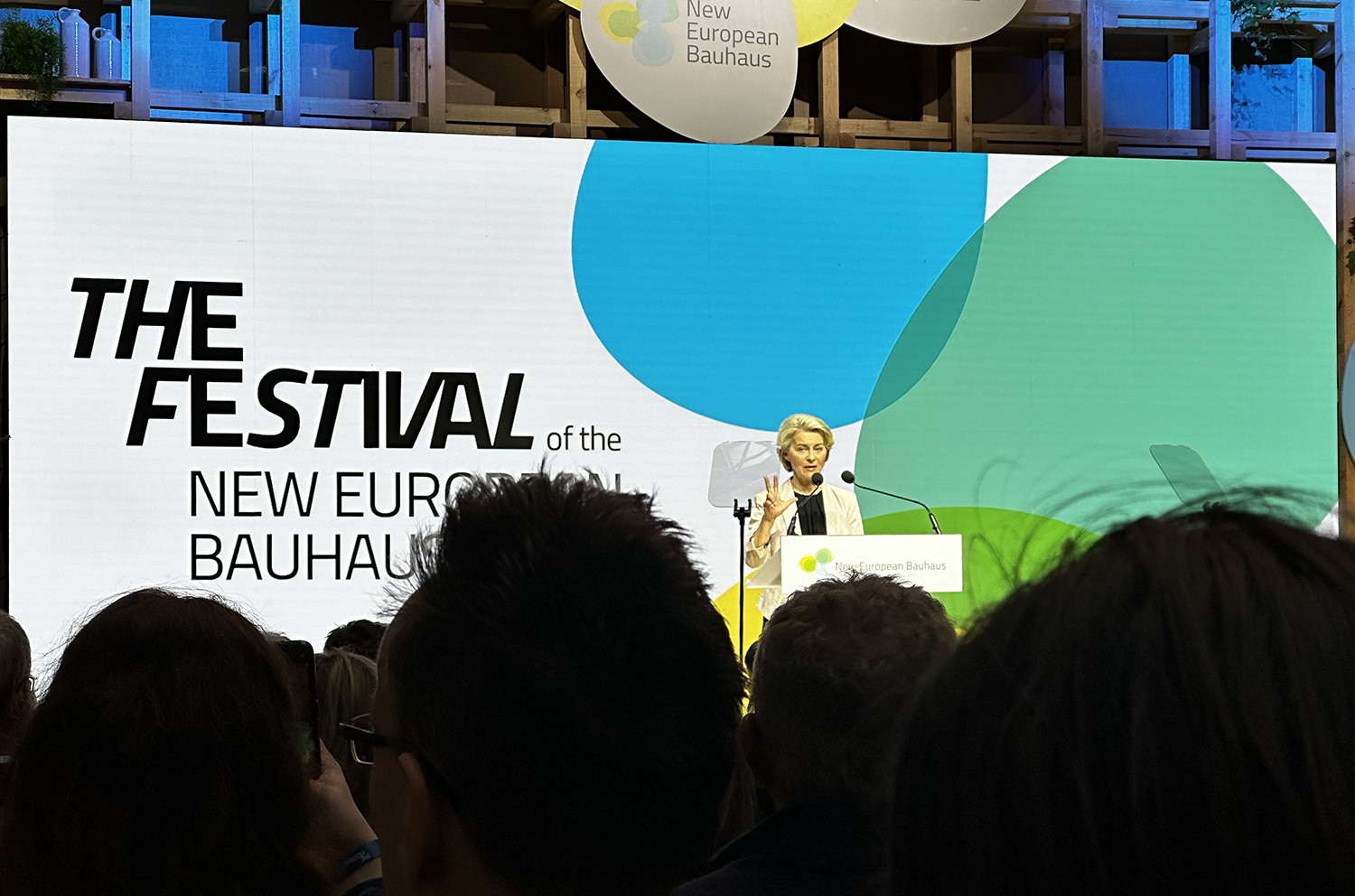
President von der Leyen highlighted three EU measures that are important for the initiative's progress. The first is stable funding. From next year on, EUR 120 million per year will be put forth for research and innovation projects through 2027.
The second key measure is diversification. Originally, the focus of the New European Bauhaus was on the built environment, and while the focus will remain, other sectors will be explored, such as fashion and textiles; a sector that has great potential to amplify the beautiful, sustainable and inclusive development. Thirdly, von der Leyen highlighted competitiveness. The European Green Deal is a growth strategy and an effort to position Europe as a leader in the global transition to a cleaner economy. According to von der Leyen, together with the construction and business sector, we can demonstrate to the world how to make the clean transition a success.
“When we launched the New European Bauhaus Initiative, the idea was to light a kind of spark. Today, we have so much more. We have a dynamic movement. One that grows more robust every year. Let us work together to ensure that the New European Bauhaus continues to grow and flourish. Let us make it the beating heart of a more inclusive, sustainable and beautiful Europe,” von der Leyen concluded.
NEB is a catalyst for change
In June, the EU will elect a new Parliament, and it is worth asking what the future holds for the New European Bauhaus initiative. According to Elisa Ferreira, EU Commissioner for Cohesion and Reforms, the NEB has already become so well known – it has generated thousands of projects and initiatives across Europe – that she has strong confidence in its continuation.
"The NEB can no longer be stopped. It has helped us imagine a better future, where the movement has become a normal culture," Ferreira said during a conversation at the opening ceremony. She mentioned Aalto University'sTime Out! Rethinking Construction exhibition among the festival's inspiring offerings.
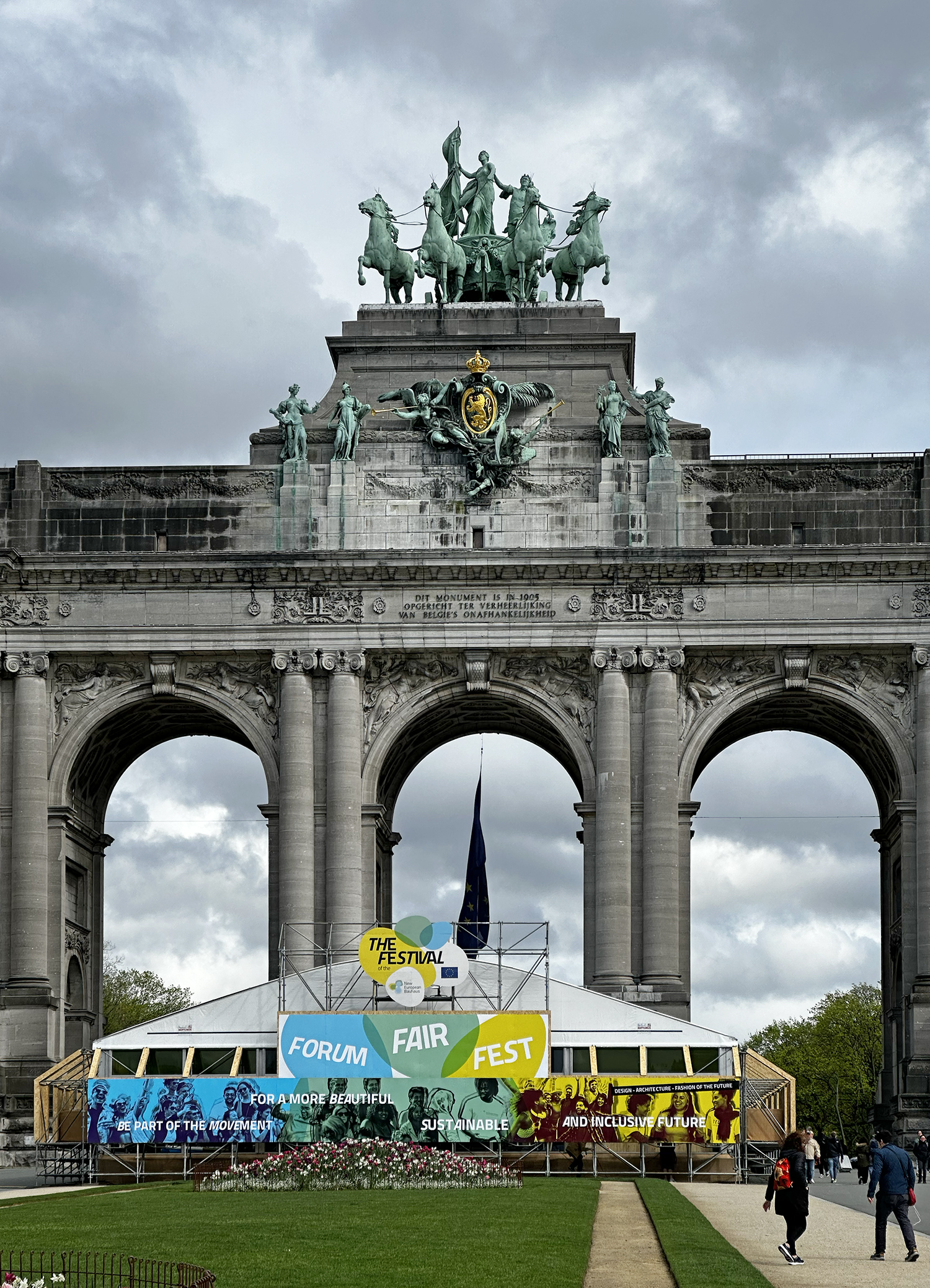
Belgium holds the Presidency of the Council of Europe this spring. According to Belgian Prime Minister Alexander De Croo, people want change if it is seen as beautiful, comfortable and attractive.
"Climate change urges us to redefine what is quality of life. Sustainable, inclusive, more livable – all this is at the heart of the New European Bauhaus," said De Croo.
In De Croo’s opinion, the fact that the EU has not merged into one "United States of Europe" but instead has 27 different nations and even more distinct cultures is a good thing. These cultures enrich and strengthen the EU, also from the point of view of a sustainable future.
"In our time of rapid development of new technologies, we are beginning to realise that the new technologies can also be used to revive old, almost forgotten technologies. The combination of new and old technologies is the way to a better tomorrow," said De Croo.
Combining high-tech and no-tech as a solution
Renowned German physicist and climate scientist Hans Joachim Schellnhuber reminded us of the hard facts about climate change. They indicate that humanity is on the way to dramatic changes that will affect the lives of billions of people.
It is estimated that by 2100, the population of our planet will have increased from almost eight billion today to nearly ten billion. The most significant increase will be in Africa, where the population will almost triple. By contrast, the population of Europe and even Asia are projected to shrink. Today, we have already exceeded the Paris Climate Agreement's target of limiting global warming to 1.5 degrees Celsius and are heading inexorably towards a two-degree rise by mid-century. At current rates of business as usual, by 2100, the average global temperature will have risen by 2.7 degrees, and the habitat of up to a third of the world's growing population will have become uninhabitable.
However, Schellnhuber's message was positive: while we will not reach our targets to stop climate change, by taking strong measures now, we can reverse the temperature rise curve at the turn of the century and start restoration.
Like Prime Minister De Croo, Schellnhuber spoke of the fusion of the new Hi-Tech and the age-old No-Tech and stop using the industrial age Middle-Tech. It will be interesting to imagine what such a change could look like in the built environment. The scientist sees the potential of the NEB festival as a platform for sharing and developing ideas and practices together.
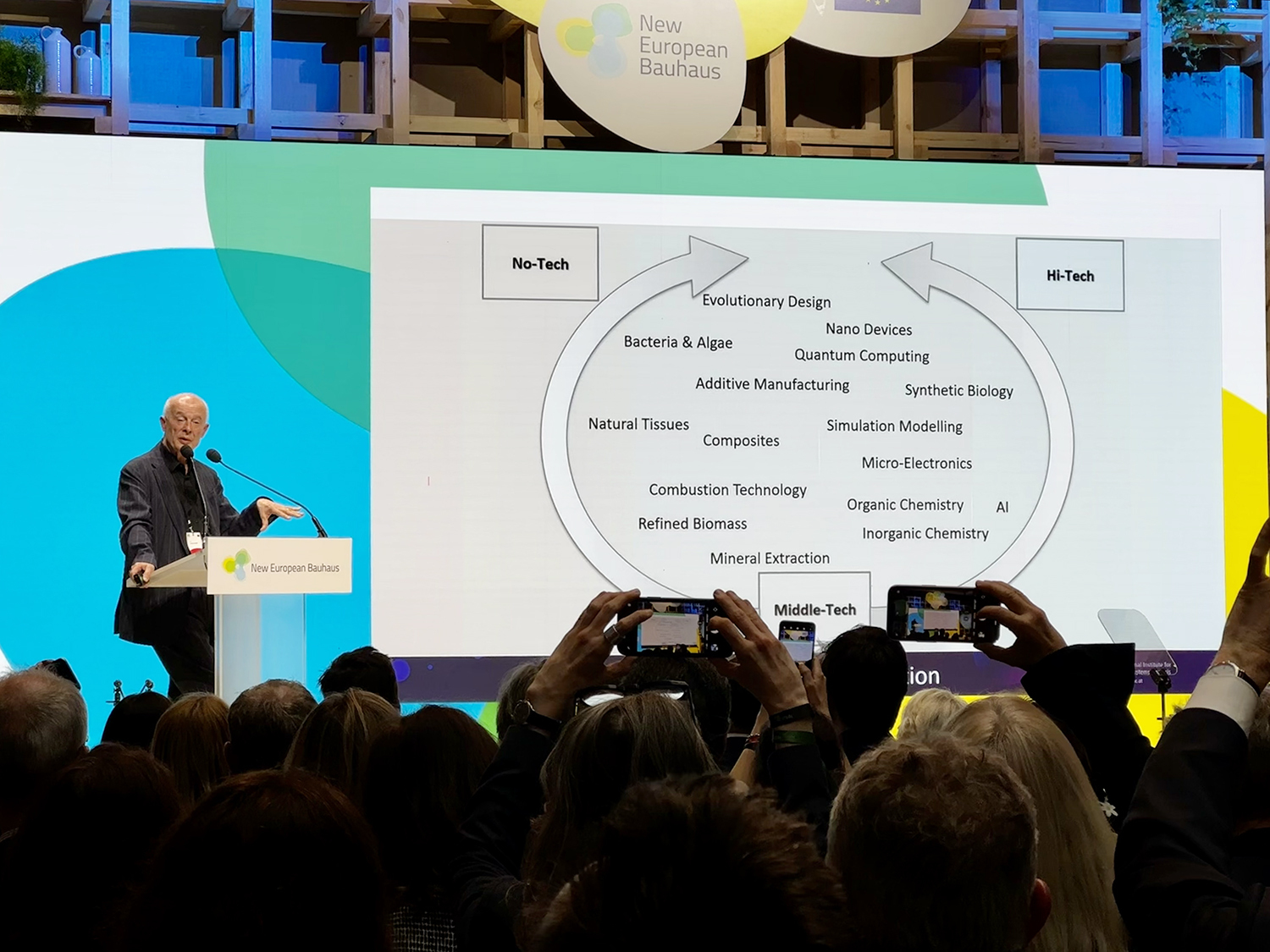
The New European Bauhaus Festival, open to all, will take place in Brussels from 10 to 13 April. The festival is also celebrated across Europe in satellite events, including three in Finland.
Archinfo is present in Brussels both in its role as the national NEB contact point and with the Finimalism project, which will organise a workshop-style discussion on Finimalize this! in the festival's official programme.
Read more about the Finimalize This! event
Read more on all Finnish content at the NEB Festival
